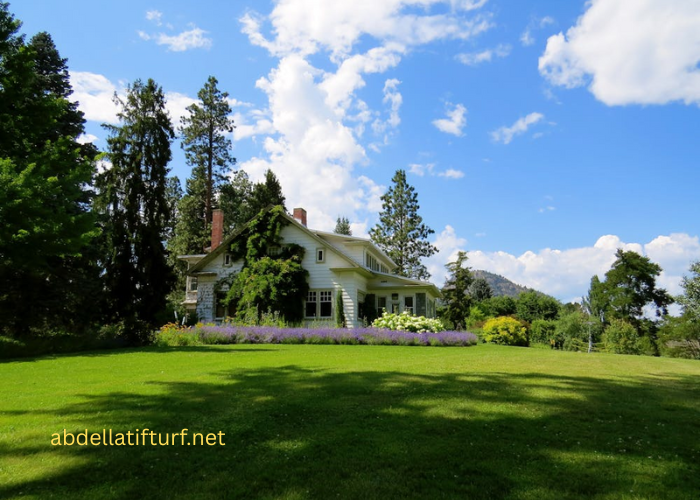In today’s world, where climate change and water scarcity are becoming increasingly significant challenges, water-wise gardening is not just a trend but a necessity. This approach to gardening emphasizes the efficient use of water, enabling gardeners to conserve precious resources while still achieving lush, vibrant landscapes. Water-wise gardening, also known as xeriscaping, goes beyond merely reducing water consumption; it promotes a holistic approach to sustainable gardening that can enhance plant health, reduce maintenance, and contribute to environmental conservation.
Understanding Water-Wise Gardening
Water-wise gardening involves using plants that require less water, improving soil quality to retain moisture, and implementing smart irrigation techniques. The concept originated in arid regions where water scarcity was a critical issue, but it has since spread globally as an effective method to conserve water and create resilient gardens. The primary goal is to design gardens that are not only beautiful and productive but also resource-efficient, minimizing the need for excessive watering and maintenance.
Key Principles of Water-Wise Gardening
- Planning and Design: A well-thought-out garden design is the foundation of water-wise gardening. The first step involves assessing the site, understanding the local climate, and selecting appropriate plants. Grouping plants with similar water needs together (hydrozoning) helps in applying water efficiently, ensuring that each plant receives the right amount of moisture without waste. Additionally, incorporating hardscaping elements like gravel paths, stone walls, and mulches can reduce the water demand of your garden.
- Soil Improvement: Healthy soil is the cornerstone of a water-wise garden. Soil that is rich in organic matter retains moisture better, reducing the need for frequent watering. Composting is a valuable practice in this regard, as it improves soil structure, enhances its water-holding capacity, and provides essential nutrients to plants. Mulching is another critical technique; it helps to reduce water evaporation from the soil surface, suppress weeds, and moderate soil temperature.
- Plant Selection: Choosing the right plants is crucial for water-wise gardening. Native plants, which are adapted to the local climate and soil conditions, are typically more water-efficient and resilient to drought. Additionally, drought-tolerant plants, such as succulents, cacti, and certain perennials, require less water and thrive in dry conditions. Incorporating a mix of these plants can create a diverse and attractive garden that requires minimal watering.
- Efficient Irrigation: Smart irrigation practices are essential in water-wise gardening. Traditional watering methods, such as overhead sprinklers, often result in water waste due to evaporation, runoff, and uneven distribution. Instead, drip irrigation systems, which deliver water directly to the plant roots, are highly effective in reducing water use. Installing rain sensors or moisture meters can further optimize irrigation by ensuring that plants are only watered when necessary. Additionally, watering early in the morning or late in the evening minimizes water loss due to evaporation.
- Reducing Lawn Areas: Lawns are often the most water-intensive areas of a garden. Reducing the size of your lawn or replacing it with drought-tolerant ground covers, native grasses, or decorative hardscapes can significantly decrease water consumption. For those who still desire a lawn, choosing drought-resistant grass species and maintaining a higher mowing height can reduce water needs and improve the lawn’s resilience to dry conditions.
- Harvesting Rainwater: Rainwater harvesting is a sustainable practice that aligns perfectly with water-wise gardening principles. Installing rain barrels or cisterns to collect and store rainwater can provide a free and natural water source for your garden. This not only reduces your reliance on municipal water supplies but also helps to manage stormwater runoff, preventing soil erosion and water pollution.
- Maintenance and Monitoring: Regular garden maintenance is key to sustaining a water-wise garden. This includes routine tasks like checking the soil moisture levels, pruning plants to reduce water demand, and monitoring for pests or diseases that could stress plants and increase their water needs. Additionally, staying informed about local water regulations and weather conditions can help you adjust your watering practices accordingly.
Benefits of Water-Wise Gardening
Water-wise gardening offers numerous benefits that extend beyond water conservation. By adopting this approach, gardeners can create landscapes that are not only sustainable but also aesthetically pleasing and supportive of local ecosystems.
Water Conservation
The most obvious benefit of water-wise gardening is the significant reduction in water usage. By selecting drought-tolerant plants, improving soil quality, and using efficient irrigation methods, you can reduce your garden’s water consumption by up to 50% or more. This is particularly important in regions experiencing water shortages or where water restrictions are in place.
Cost Savings
With reduced water usage comes lower utility bills. Water-wise gardening can lead to substantial savings, especially in areas where water is metered or subject to tiered pricing. Additionally, by minimizing the need for fertilizers, pesticides, and other chemical inputs, gardeners can further reduce their expenses.
Lower Maintenance
Water-wise gardens typically require less maintenance than traditional gardens. Drought-tolerant plants are often more resilient to pests and diseases, reducing the need for chemical treatments. Mulching and efficient irrigation systems also help to reduce weeding and watering tasks, giving you more time to enjoy your garden rather than laboring over it.
Environmental Benefits
Water-wise gardening contributes to environmental conservation by reducing water waste, minimizing chemical runoff, and supporting local biodiversity. Native plants, which are often used in water-wise gardens, provide habitat and food for local wildlife, including pollinators like bees and butterflies. Furthermore, reducing lawn areas and planting drought-tolerant species can help sequester carbon and mitigate the effects of climate change.
Aesthetic Appeal
Contrary to the misconception that water-wise gardens are barren or unattractive, they can be incredibly diverse and beautiful. The use of a wide variety of plants, textures, and colors can create a visually appealing landscape that changes with the seasons. Water-wise gardens can be designed to suit any style, from modern minimalist to lush Mediterranean, proving that sustainability and beauty can go hand in hand.
Overcoming Challenges in Water-Wise Gardening
While water-wise gardening offers many benefits, it also presents some challenges. For example, gardeners may need to adjust their expectations regarding plant growth and appearance, especially during periods of drought. Patience is essential, as establishing a water-wise garden can take time, and plants may initially grow more slowly as they adapt to less water.
Additionally, sourcing drought-tolerant plants and installing efficient irrigation systems may require an upfront investment. However, these costs are often offset by long-term savings in water and maintenance. It’s also important to stay informed about the latest techniques and innovations in water-wise gardening, as the field continues to evolve with new research and technology.
Conclusion
Water-wise gardening is a powerful tool in the fight against water scarcity and environmental degradation. By embracing this approach, gardeners can create landscapes that are not only beautiful and productive but also sustainable and resilient. Whether you’re an experienced gardener or a novice, adopting water-wise practices can help you conserve resources, reduce your environmental footprint, and grow more with less. In an era where every drop of water counts, water-wise gardening is a wise choice for both your garden and the planet.




